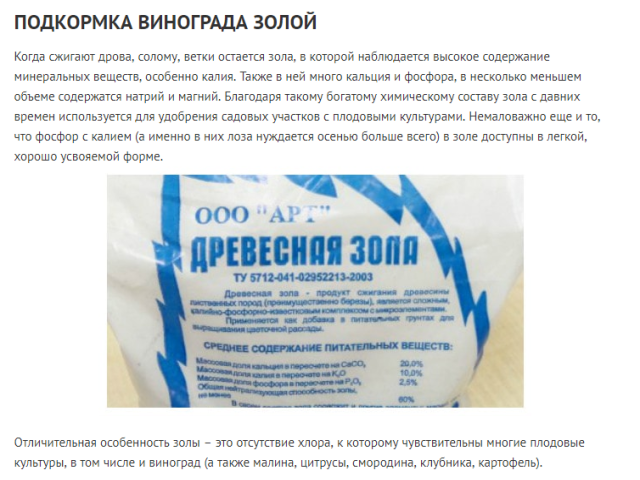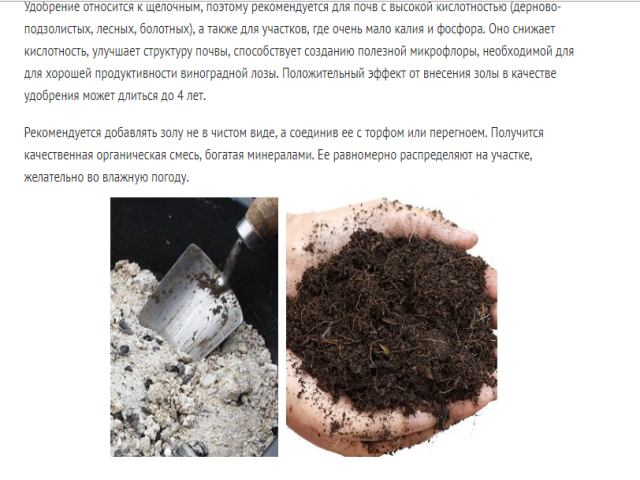 Timely autumn feeding of grapes in the winter is needed in order to protect it from low temperatures, diseases and pests. You need to take care of the plant throughout the year. For this, the vine is regularly inspected, extra shoots are removed, the soil is loosened and fertilized. Feeding is especially important before winter, because it allows you to maintain plant health throughout the year.
Timely autumn feeding of grapes in the winter is needed in order to protect it from low temperatures, diseases and pests. You need to take care of the plant throughout the year. For this, the vine is regularly inspected, extra shoots are removed, the soil is loosened and fertilized. Feeding is especially important before winter, because it allows you to maintain plant health throughout the year.
Content
What trace elements are needed?
The fruitfulness of the bush will increase if there are useful substances in the soil. Over time, the land becomes depleted and the berries grow poorly. To ensure longevity, it is necessary to ensure that the soil contains:
- Zinc. Directly affects the yield of the vine.
- Nitrogen. Affects the growth of leaves and shoots. In September, it must be carefully added so that normal wood maturation occurs.
- Potassium. In the cold season, the bush needs it most. This trace element allows fruits to ripen faster.
- Phosphorus. Allow faster ripening inflorescences.
- Copper. Helps the plant winter and tolerate drought normally.
- Boron. Acid accelerates ripening, it affects the sugar content of berries.
Read also:
Fertilizer Methods
 Especially important is the autumn top dressing of grapes in the winter after the first year of flowering. The bush may lack valuable substances after picking berries, so it is necessary to use organic fertilizers with a small amount of wood ash.
Especially important is the autumn top dressing of grapes in the winter after the first year of flowering. The bush may lack valuable substances after picking berries, so it is necessary to use organic fertilizers with a small amount of wood ash.
Excessive fertilizing will also negatively affect the condition of the bush.
Most gardeners cultivate the land around the trunk with a small amount of compost or manure.
It is impossible to feed the soil only when the fertilizer was used during planting. In such a situation, the first feeding should be only after 3 years. Annual fertilization of the earth in the autumn period can lead to the fact that the bush will cease to produce berries. In this regard, feeding grapes is recommended 1 time in 4 years.
In the fight against pests in the fall, you can use a soda-saline solution to spray them with bushes.
A bucket of water will need 10 tbsp. table salt and 5 tablespoons food. Using a spray gun, the product is sprayed onto a bush and poured near the roots. This procedure will be most effective in late October.
For feeding, you can use the following methods:
- In early or mid-September, you can resort to foliar fertilizer. Trace elements are well absorbed through the leaves, so next year the plant will bring more crops and will tolerate frosts well. To do this, a solution of ash with herbs or special macro-fertilizer is suitable. You can add sugar there so that the product is absorbed faster.
- To enrich the roots of the plant, salt and an aqueous extract of superphosphate are used in a ratio of 2: 1. Boric acid, zinc sulfate, iodine, potassium permanganate are added there. The product is used in dry or dissolved form, it is applied to a depth of 20 cm.
- After the first frosts, a mixture of potassium sulfur and superphosphate is applied. Components are used in equal amounts. This treatment is performed every 3 years.


Fertilizing grapes in the fall in winter is recommended in the early morning or evening in calm weather, so that the product used is well absorbed and brings maximum effect. After fertilizers, mulching is carried out in the fall, due to which the leaching of nutrients from the soil is reduced and the root system is preserved from freezing.




 Non-covering winter-hardy grape varieties for Moscow region
Non-covering winter-hardy grape varieties for Moscow region How to keep the vine in winter
How to keep the vine in winter When can I transfer grapes to another place in the fall
When can I transfer grapes to another place in the fall How to cover and prepare grapes for the winter in the suburbs
How to cover and prepare grapes for the winter in the suburbs